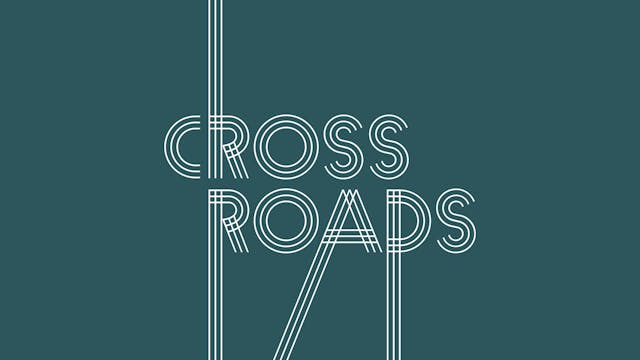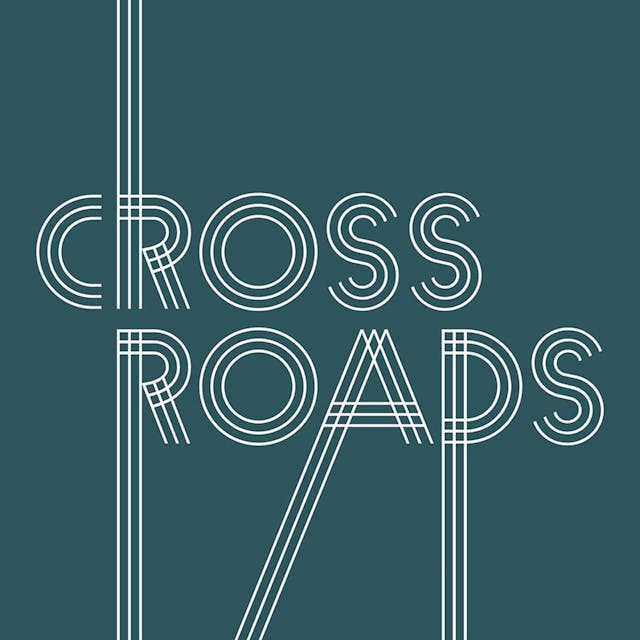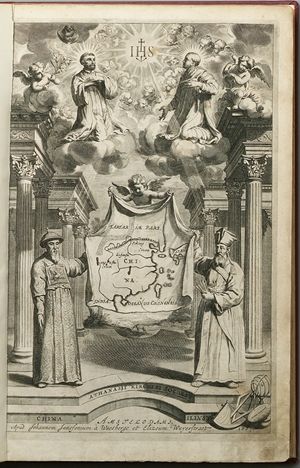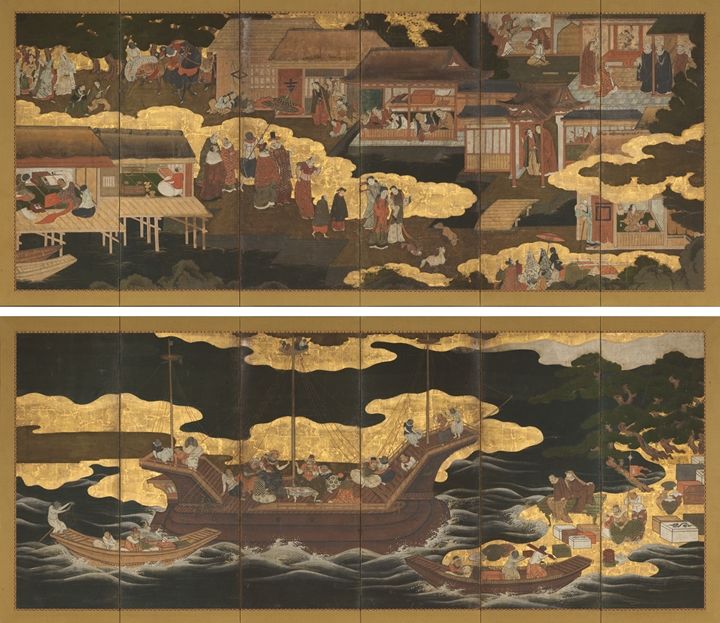

Crossroads
Empires and Emporia
Empires and Emporia highlights the cultural consequences of sustained contact between Asians, Europeans, and Americans in a connected history that coalesced in the sixteenth century. This period saw the arrival of Portuguese merchants in China and Japan, the conquest of the Philippines by the Spanish, and the establishment of a transpacific trade route between Manila and Acapulco. The final link in a globe-encircling economic system, the annual fleet known as the Manila Galleon connected the eastern and western limits of the world known to Europeans. Fueled by Spanish-American silver and the demand for Asian luxury goods such as silk and porcelain, the transoceanic circulation of people, things, and ideas left its visible trace in works of art that bear vivid witness to the complex dynamic of human encounter and exchange.
Right: Athanasius Kircher (German, 1602–1680). Athanasii Kircheri e Soc. Jesu China monumentis: qua sacris qua profanis, nec non variis naturae & artis spectaculis, aliarumque rerum memorabilium argumentis illustrata (Amsterdam: Apud Joannem Janssonium a Waesberge, & Elizeum Weyerstraet, 1667). The Metropolitan Museum of Art, New York, Purchase, Jane E. Andrews Fund, in memory of her husband, William Loring Andrews (912.1 K63 Q)
南蛮屏風 (Arrival of the Europeans), first quarter 17th century. Edo period (1615–1868), Japan. Pair of six-panel folding screens; ink, color, gold, and gold leaf on paper, each 41 3/8 in. x 8 ft. 6 5/8 in. (105.1 x 260.7 cm). The Metropolitan Museum of Art, New York, Mary Griggs Burke Collection, Gift of the Mary and Jackson Burke Foundation, 2015 (2015.300.109.1, .2)
On view in gallery 209.
Global Encounters

Featured in this section are artworks visibly marked by encounters between Asian, European, and American cultures during the early modern period. Created and circulated in diverse geographic spaces and social contexts, they offer glimpses of a world connected by trade networks as well as histories of religious and imperial expansion. These circumstances yielded singular works of art, sometimes of indiscernible origin, seemingly created in places where cultures meet or collide. The examples on view include commodities destined for export, composite works created in more than one place, and art repurposed or remade by consumers on another side of the world. The commingling of European and Asian subjects, styles, materials, and techniques signals appreciation, if not always understanding, and provides material witness to a growing global consciousness.
Selected Artworks
View allThe Manila Galleon

In 1564 a Spanish fleet sailed from the west coast of present-day Mexico and reached the Philippine islands. The discovery of a transpacific return route a year later paved the way for the establishment of direct, continuous trade between Asia and Spanish America.
For nearly 250 years, the so-called Manila Galleon annually departed Acapulco loaded with tons of American silver and returned with cargoes of silk, porcelain, lacquer, and other luxury goods from Asia. Some of it was reexported to Spain via the Atlantic port of Veracruz, but much of it remained in New Spain, where it had a profound cultural impact. People wore clothing made of Chinese silk and Indian cotton, drank chocolate from porcelain cups, and worshipped at altars adorned with ivories from the Philippines.
The use and display of imported possessions from Asia signaled elevated social status. For Creole elites—Spaniards born in America—it also informed an ongoing discourse of self-identification that distinguished them from their Iberian counterparts. The abundance of goods from Asia was a visible manifestation of difference from Spain, and the thriving metropolis of Mexico City was celebrated as a prosperous emporium where global trade routes converged.
Selected Artworks
View allThe First Americans in Canton


